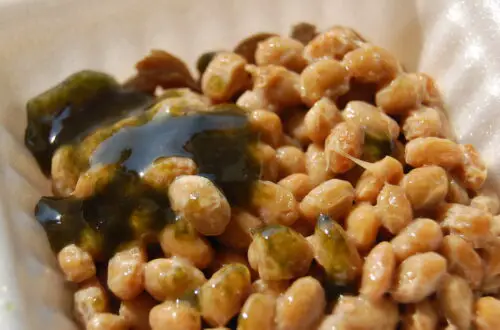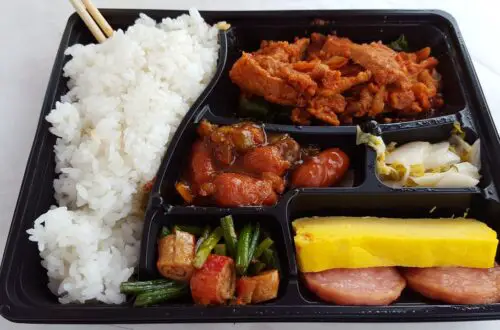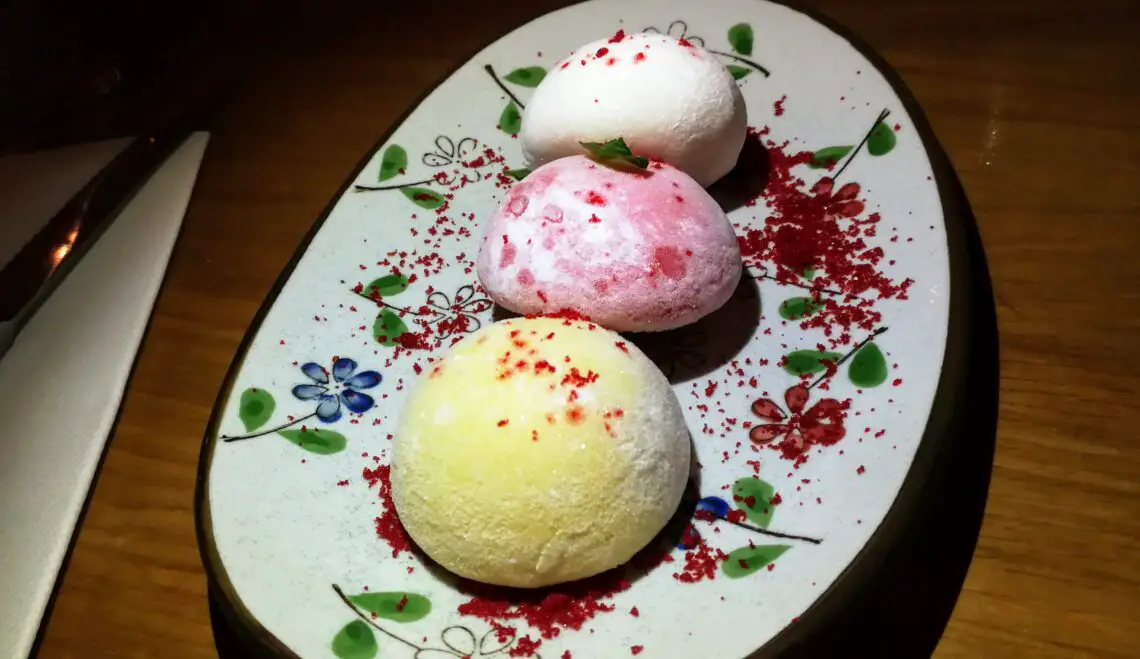
Best Mochi in Japan: Where to Get the Ultimate Mochi
When in Japan, Mochi is a must-have delicacy. And there are literally thousands of mochi outlets all over Japan!
While there are a lot of well-known mochi places in Japan, below is a curated list of ten places you can go to have this mouth-watering Japanese specialty.
- Nakatanido, Nara
- Takemura, Tokyo
- Oosumi Tamaya, Tokyo
- Seigetsudo Honten, Tokyo
- Ginza Akebono, Tokyo
- Demachi Futaba, Kyoto
- Gekkou, Tokyo
- Umezono, Kyoto
- Mochishou Shizuku, Osaka
- Mizuho, Tokyo
Here is everything you need to know about mochi. From understanding how mochi is made to selecting the best place for enjoying a soft, fresh mochi, we’ve got you covered. And we also tell you about the history and culture around mochi. Read on!

What Is Mochi?

It is made from sticky short-grain or medium-grain glutinous Japanese rice known as Mochigome. The cooked rice is pounded until it turns into a gooey mass. It is then molded into the desired shape. It is usually circular, but can also be a square or a rectangle. The other method to make mochi is to mix dry Mochigome rice flour with some water and steam it to get the sticky mochi. This type of mochi is known as Dango. The first method is preferred because it captures the taste and scent of the rice better.
Mochi does not have a special taste. A plain mochi tastes like plain rice. It has a neutral flavor and a starchy aftertaste. But different flavors are added to it make it a delectable snack catering to different taste buds. The most popular is the sweet mochi which is also called wagashi mochi (wa – old school Japanese, and gashi – sweet). The savory mochi is preferred by some. It is also used in other foods such as soup with cut-up pieces of mochi in it.
The texture of mochi can be likened to play dough. To break a mochi with your hands, you pull it, and it stretches until the strands separate and break. If the mochi has been filled with a flavored paste, you can see it when you break the mochi. The outer skin is smooth and can be slightly crisp if the mochi is grilled. But the insides are always soft and mushy.
Different Types Of Mochi
The word ‘Mochi’ can be thought of as an umbrella term for a variety of different rice-cake based foods. But if you look at all the available mochi variations, there are below fifteen different types of mochi.
Fifteen Types Of Mochi
The meaning of the Japanese names for each mochi is given in parentheses.
Daifuku Mochi (great luck mochi)
It is a round mochi that is filled with a red beans paste or a white beans paste. It is round mochi covered in soy flour and sugar.
Ichigo Daifuku (strawberry daifuku)

It is a variation of daifuku with a whole strawberry lodged in the soft, stretchy exterior of the mochi.
Bota Mochi (tree peony mochi)
Think of Bota mochi as a mochi with filling, only it is turned inside out. That’s how the mochi gets this name because it looks like a colored peony. Sweetened red beans paste (anko) covers the mochi ball.
Kinako Mochi (roasted whole soy flour)
This is a soft mochi that is best eaten warm. It is toasted and coated in soybean powder and sugar before serving.
Kiri Mochi (skin or bark mochi)
This is a basic mochi. Kiri mochi are unflavored blocks of mochi. They are preserved and then used in various cuisines.
Isobe Yaki (baked mochi with seaweed)
Isobe yaki, sometimes also known as Isobe maki, is a delicious mochi snack. Mochi pieces are grilled and wrapped in seaweed sheets. They are dipped in soy sauce before eating.
Kusa Mochi (grass mochi)
This type of mochi is made from the Japanese mugwort plant known as yomogi. It has a nice green color to it and in Japanese, it means ‘grass mochi’. It has a leafy aroma and is usually filled with anko.
Yatsuhashi (eight bridges)

In a departure from regular mochis, Yatsuhashi is a triangular-shaped mochi. It is a cinnamon-flavored mochi. They are served raw or baked before serving. They can have a wide variety of fillings.
Hanabira Mochi (flower petal mochi)
The name of this lovely looking mochi loosely translates to ‘flower petal mochi’. It is a delicate-looking mochi version. It is white in color, almost translucent, and comes with a sweet filling. Due to the translucent rice covering, the color of the filling shows making the mochi appear like a beautiful flower petal.
Sakura Mochi (cherry blossom mochi)
The Sakura mochi is a pink-colored mochi made with red bean paste. It is wrapped in a salted cherry leaf and is a traditional springtime delicacy.
Dango (dumpling made from rice flour)

Dango is a mochi that is not made with cooked rice, but with rice flour (mochiko) that is steamed. The appearance of dango also differs from that of a traditional mochi. A dango will typically have 3 – 5 rice balls skewered on a stick. It can also come dipped in sauces of different flavors.
Yaki Mochi (mochi cooked over direct heat)
In this type of mochi, mochi balls are skewered on a stick and are then grilled over fire. The fire softens the mochi balls to their signature sticky texture. This is a popular tea time snack during winters in Japan.
Mochi Ice Cream (mochi with ice cream filling)

The yummy Mochi ice cream is a popular delicacy in recent times and is an awesome summer treat. The traditional mochi outer covering is filled with ice cream in this version and it’s every bit as tasty as it sounds.
Hishi Mochi (water caltrop mochi)
Hishi mochi is a diamond-shaped mochi that is stacked in three layers. The three layers are red (colored with Cape jasmine flowers), white (made from water caltrop), and green (made from mugwort). They are a symbol of fertility and are usually prepared around the time of Hinamatsuri which is a Japanese Girl’s Day festival.
Kagami Mochi (mirror mochi)
Kagami mochi is a New Year’s special mochi version. It is a special type of mochi in which two round mochis are placed on top of each other. On the very top is kept a citrus fruit. Kagami mochi is used as a decoration for the New Year celebration and is then eaten.
The Flavorful Sweet Mochi
Mochi is truly a versatile food item. It can be flavored and filled and had with soups and tastes great in each of its variations. Different regions of Japan may have a different variation. Similarly, homemade mochi can have different styles in every home.
Mochi is quite different from western sweets such as cakes and pastries. It has a very earthy flavor. And the colors are earthy too. Instead of bright reds and browns, wagashi mochi comes in pastel greens, pinks, yellows, and of course the basic white. There is a definite sweetness to mochi, but it is not overpowering. The outer texture of the mochi is smooth and can sometimes be slightly crisp, but as you bite into a mochi, you are surprised by a softness that greets you as you experience the subtle, sweet taste.
Wagashi mochi comes in different flavors such as mango, coconut cream, strawberry, green tea, chocolate, etc. Mochi also comes with the outer rice covering filled with different flavored pastes. Sweetened red bean paste (anko) and white bean paste (shiro an) are widely used as a filling. Don’t be surprised by the use of beans in a dessert, though. The beans are used in the form of a smooth paste that tastes almost like marzipan when encapsulated in the soft mochi.
Mochi In Savory Cuisine

Mochi pieces are used in a kind of soup known as Zoni which is a Japanese New Year specialty. It is also used in a similar way in Oshiruko, which is a sweet soup made from azuki beans. These soups are enjoyed in Japan during the winter to keep themselves warm. Toasted mochi is also served on top of Chikara Udon, which is a type of soup that has noodles in it.
Origin Of Mochi
Mochi was used as a religious offering to the Gods during the Japanese Heian period (794 – 1192). But folklore suggests that the origin of mochi goes way back to the Yayoi period (300BC – 300 AD), shortly after the red rice cultivation started in the Yamato province. Thus, according to historical sources, red rice was used for mochi for many years.
Interestingly, the pounding process, which is at the core of mochi preparation originated in China. Many native Chinese tribes used this technique.
Best Places To Have Mochi In Japan
Mochi is extremely popular in Japan. It is also one of the widely available street foods in the cities of Japan. Since it is a favorite with the locals as well as tourists, mochi outlets can be found all over Japan. You can even buy pre-packaged mochi from departmental stores.
However, if you are looking for authentic stores that sell fresh mochi made in the traditional way, you should know the right places. Below is a curated list of ten well-known places that serve the best mochi in Japan. All these places make fresh mochi in the traditional Japenese style and use the traditional ingredients which give the mochi its signature taste.
Nakatanido, Nara
Nakatanidou in Nara is very famous and a several years old place for mochi. They serve delectable light green mochi made with Japanese mugwort and filled with red bean paste. This is one of the well-known places that make mochi the traditional way by manually pounding the cooked rice.
In fact, the place gathers a crowd every day to witness the process of pounding which is fascinating to watch. And you can get fresh mochi that’s still warm and bite into these light green beauties as you walk down the streets of Nara. Other flavors are also available.
Takemura, Tokyo
Takemura is one of the older shops that serve mochi. It is still located at the same place where it was first opened back in 1930. This building is now considered to be one of the historical buildings in Japan.
Though this little shop is a little off the main street, it is totally worth it to find your way here and enjoy the delicious mochi that they serve.
Oosumi Tamaya, Tokyo
Oosumi Tamaya is the place that is credited with being the original maker of the famous Daifuku with strawberries. It is one of the first mochi places in Shinjuku. The daifuku that you get here has the subtle sweetness that is a characteristic of good, traditional mochi.
Oosumi Tamaya is a small, minimalistic place. Even though they are famous for the strawberry daifuku, other flavors of mochi are also available and are equally good!
Seigetsudo Honten, Tokyo
This is one of the oldest establishments that serve quality and authentic wagashi mochi. Their first branch opened in Ginza in 1907. Their specialty is a bite-size mochi with an azuki bean filling, known as the Goma mochi. They have several stores in Tokyo.
The Japanese desserts made here make for excellent souvenirs to take home.
Ginza Akebono, Tokyo
Ginza Akebono was first established in Ginza in 1948 and it has been selling traditionally made mochis since then. It is not uncommon to see a queue of people standing outside the shop, waiting for their turn to get their choice of mochi from this famous place.
Ginza Akebono is a must-visit for wagashi mochi and their other sweets such as sakura are also worth a try. They have their special strawberry mochi from December to April every year and attract the locals as well as tourists from all over the world. They have other branches around Tokyo, too.
Demachi Futaba, Kyoto
This is a well-known place for wagashi mochi located in Kyoto. It is a small place that offers takeaway. Don’t be discouraged if you find a long queue for orders. The staff here is quite efficient and the queue quickly moves forward and it takes surprisingly less time to get your order.
It is one of the older establishments which make really tasty mochi in the traditional style. No wonder then that day after day, people line up to buy mochi from this place. If you visit here, you must try their most famous Myodai Mame Mochi. It is a soft, fluffy mochi with adzuki bean paste. The taste is one that will linger on your tongue and be on your mind for a long time to come!
Gekkou, Tokyo
Gekkou in Ueno is known for its home-style mochi. Their kinako mochi is quite popular. While here, don’t miss the excellent Japanese tea they serve. It goes very well with the sweet mochi.
As with other popular places, this place, too, can have a long waiting time. But the wait is usually worth it.
Umezono, Kyoto
A small but intimate and cozy place, Umezono serves one of the best mochi desserts you can have in Kyoto. The staff here is very helpful and considerate. Their mochi is a must-have with some tea on the side.
They serve the traditional Japanese mochi and other desserts and boast of home-style cooking which draws a large number of people to this place. The wagashi mochi is just the right balance of sweetness. They also serve the dango style mochi on skewers.
Mochishou Shizuku, Osaka
You must visit this place for a twist in the traditional mochi taste. Instead of the red beans paste that is usually used as a filling, this place uses a beet paste infused with rum. The result is a sweet mochi with a slightly sour aftertaste. This interesting flavor makes the mochi here taste refreshingly good!
If you are looking for traditional wagashi mochi but with an interesting touch, you simply must check out this place. As an add-on, this place has a lovely ambiance. All of their mochi flavors have the signature subtle taste.
Mizuho, Tokyo
If you have worked up a good appetite walking in the streets of Tokyo, head to Mizuho. Their mochi balls are easily bigger than what you would find at most other mochi places available elsewhere. The smooth mochi with a rich azuki bean paste inside is a treat for your taste buds.
However, if you are going here, aim to go a little early. The place opens at 8:30 AM and they are sold out by the late afternoon. But if you are looking for plump, great quality mochi with an authentic taste, you must visit this place.
Traditional Mochi And The Culture Around It
Looking at the availability of mochi all over Japan today, it is hard to believe that mochi was once reserved only for special occasions. Traditionally mochi was a delicacy made and served only on specific days, festivals, or celebrations. But, now you find mochi literally everywhere you go in Japan. It is a popular food that is served in upscale cafes, restaurants, confectionery stores, small takeaways, street-side small vendors, as well as in departmental stores.
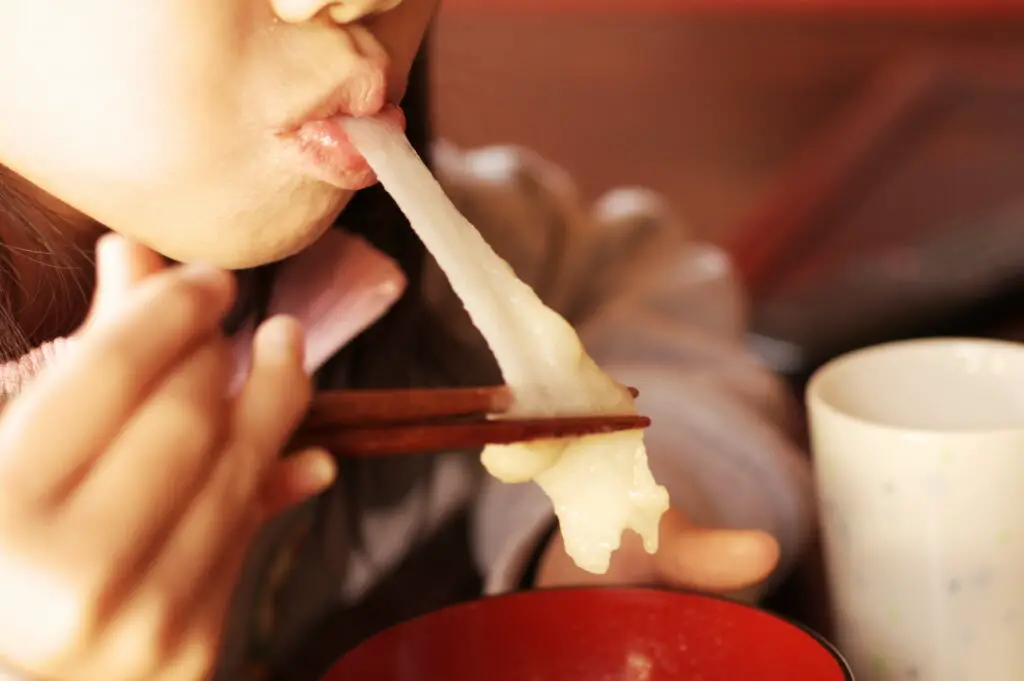
The mochi prepared during the Heian period is the closest to the mochi that we see today. People in those times believed that the mochi strands that stretch are a symbol of long life. Dried mochi was also believed to be good for making the teeth strong. Apart from being used as a religious offering, it was also considered as being a lucky food at weddings.
Interested in knowing different days which are celebrated in Japan? Here’s all you need to know: National Holidays in Japan and Their Significance.
Mochi For Celebrating The New Year

Mochi has traditionally been made for the New Year’s celebration. Even though mochi is enjoyed all year round now, it remains a specialty for the New Year celebration even today. Kagami mochi is a traditional mochi variation that is still eaten on New Year’s Day. On this day, Zoni, a kind of soup is eaten which has pieces of mochi in it along with some other vegetables. Kinako mochi is typically a mochi that is grilled directly over a fire like a marshmallow and then dipped in water and coated with a mixture of soy flour and sugar.
Mochi To Mark The Arrival Of Spring
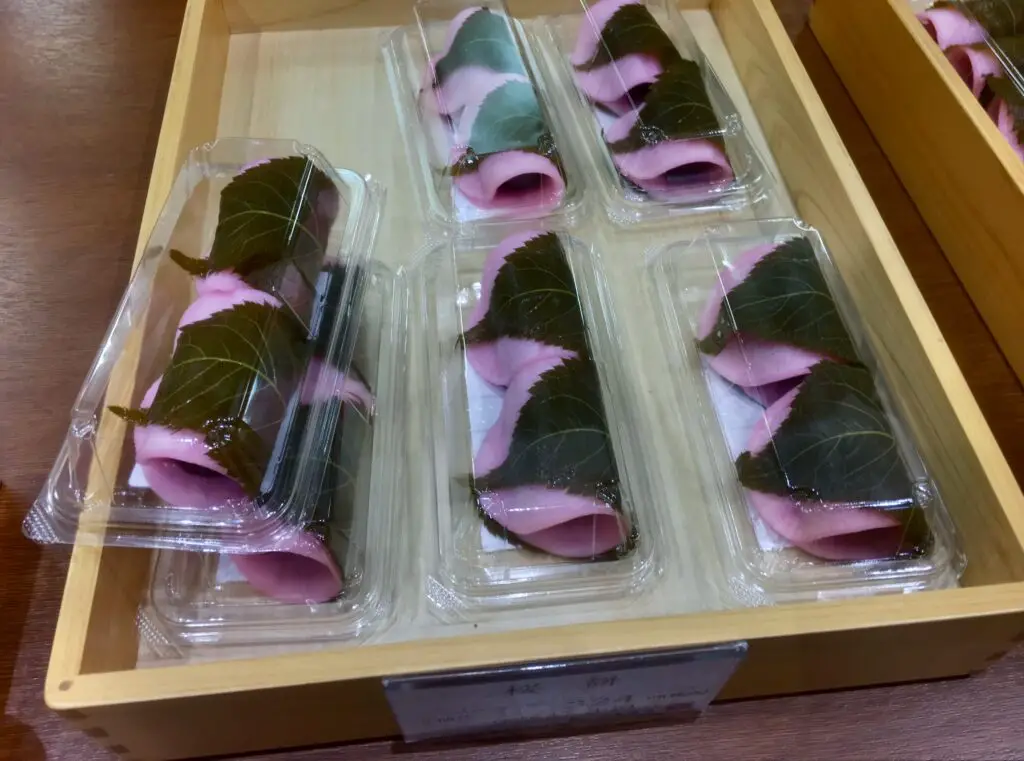
Spring in Japan is the cherry blossom season. To mark this beautiful season, celebrations include the preparation of Sakura mochi. It is a lovely pink colored mochi to match the pink cherry blossoms. It is made with sweetened red bean paste and is wrapped in a salted cherry leaf before serving.
Mochi For Children’s Day Celebration
Two variations of mochi are made on Children’s Day, which falls on the 5th of May every year in Japan. There is a white mochi that is filled with a red beans paste and wrapped in a Kashiwa oak leaf. There is also a dango version of mochi (mochi made from rice flour) that is wrapped in bamboo leaves before serving.
Mochi In Autumn Season

The Ohagi mochi is a slight variation of the Botamochi which uses red beans paste to cover the mochi ball. It has a slightly different texture than Botamochi in that the red paste is a little chunky. It is made to commemorate the autumn season.
Mochi For Girl’s Day

Hishi mochi is a mochi that is made especially for the Girl’s Day celebration in Japan. It is a three-layered, rhomboid-shaped mochi. It is made as a religious offering a few days before the actual festival.
How Is Mochi Made?
Mochi is made in Japan both commercially and in households. The traditional way of making mochi has been replaced by the use of machines in many parts. However, there are some places that still serve mochi that is made the traditional way. Also, during festivals or special events, families or communities still come together to make mochi the traditional way.
The Traditional Way Of Making Mochi
The traditional way of making mochi is a lot of hard work. The glutinous rice is soaked overnight and is then steamed. The sticky steamed rice is then transferred to a traditional mortar known as usu and is pounded with wooden mallets known as kine.
Two people usually work with the mallets in synchronized movements to alternately beat the rice. This way of pounding the rice to make mochi is known as mochitsuki.

Traditionally, one person wields the mallet while the other folds and wets the mass of rice between beatings. This is a very rhythmic method where both the persons use vocal noises to keep the rhythm and synchronize movements to avoid injury.
The below video shows the traditional technique of beating the rice manually. It is fascinating to watch the synchronized actions of the men at work. The video is of the rice pounding at Nakatanido, Nara.
After beating the cooked rice, it turns into a sticky mass. It is then divided into small balls. These balls can be made manually. But for commercial places, machines are available that make even sized balls. The balls are then flattened a little by hands and are wrapped around balls of filling. The resultant sphere is again flattened by hand and this is how the mochi is made.
The Modern Way Of Making Mochi
The modern way employs machines to cut out the manual work needed to pound the rice. Also, the modern way usually uses rice flour that is cooked on a stovetop or in a microwave. The rice is cooked until it becomes a malleable mass and is then transferred to machines that emulate the pounding action. The machines are available for making mochi on a commercial scale as well as for households.
Related Questions
More questions about mochi? Read on.
Is mochi healthy?
Mochi is easy to digest and is a great snack or can even be a good option for breakfast. When mochi is combined with seaweed, the resultant snack is packed with essential vitamins (Vitamin A, C, E, Niacin, and minerals). It is gluten-free and cholesterol-free. Traditionally made mochi uses natural ingredients and does not use additives making it a healthy option.
How many calories does a mochi have?
An average serving of mochi is about 100 calories. This makes mochi a great dessert. Even though it’s hard to stop at one, if you have mochi in moderation, it won’t hamper your attempts at maintaining or losing weight.
Is mochi dangerous to eat?
Mochi is a sticky food. If not chewed properly, the mochi piece can get lodged in the food pipe and cause choking. The simple way to prevent this is to chew the mochi properly before trying to swallow. Also, for children or old people, it is advised to cut the mochi into bite-sized pieces so as to ensure that it does not become a choking hazard.
Conclusion
If you are in Japan, don’t miss mochi. In fact, our advice is to try different flavors of mochi, and surely you will have a favorite by the end of it. Many frequent travelers have their favorite joints for having mochi. What’s your favorite?


